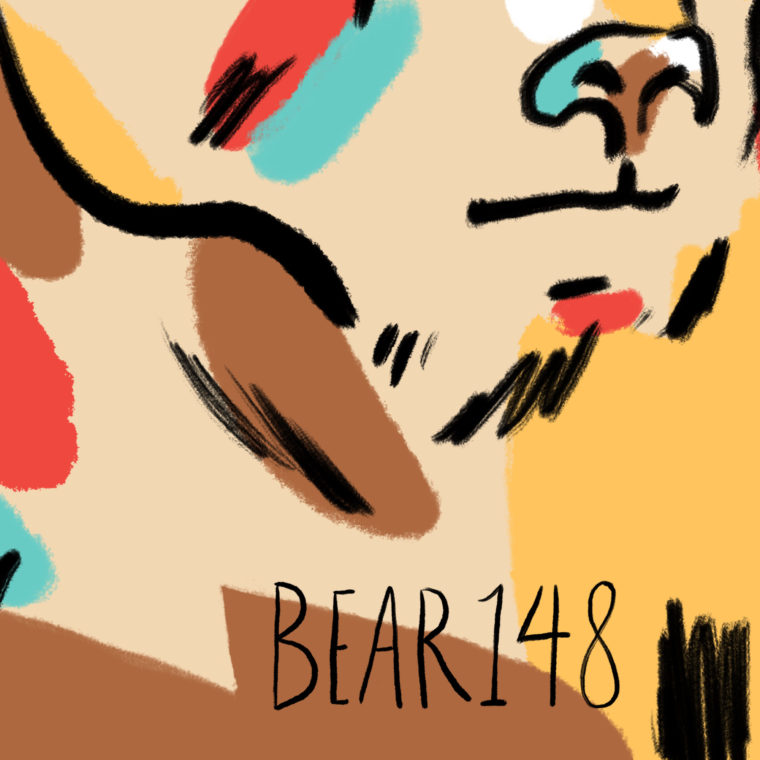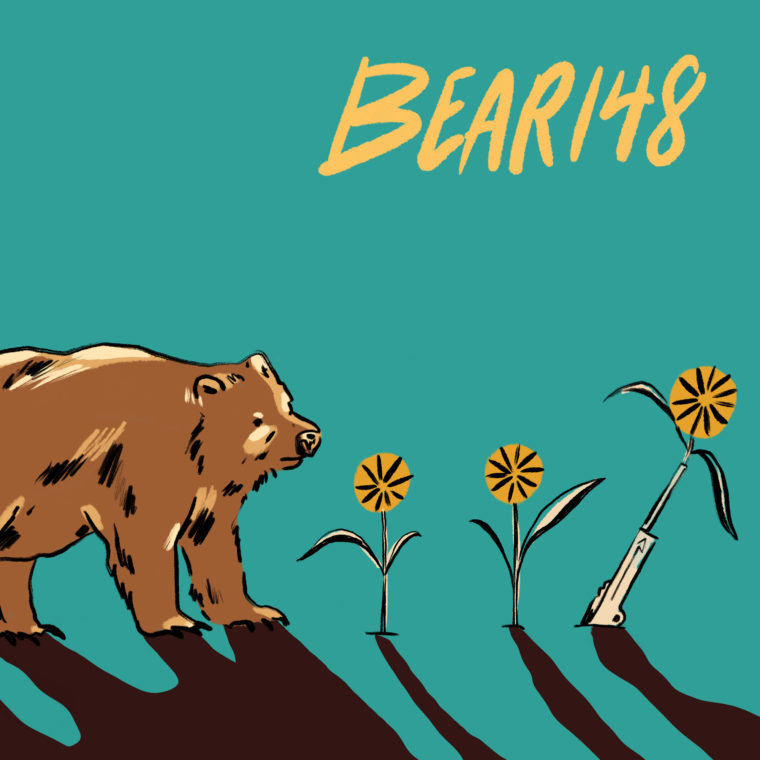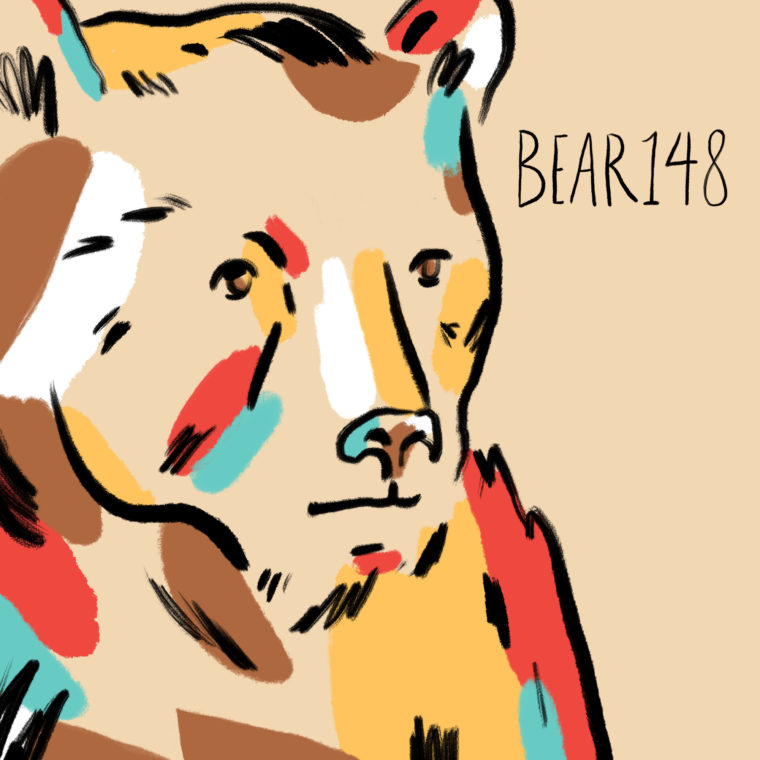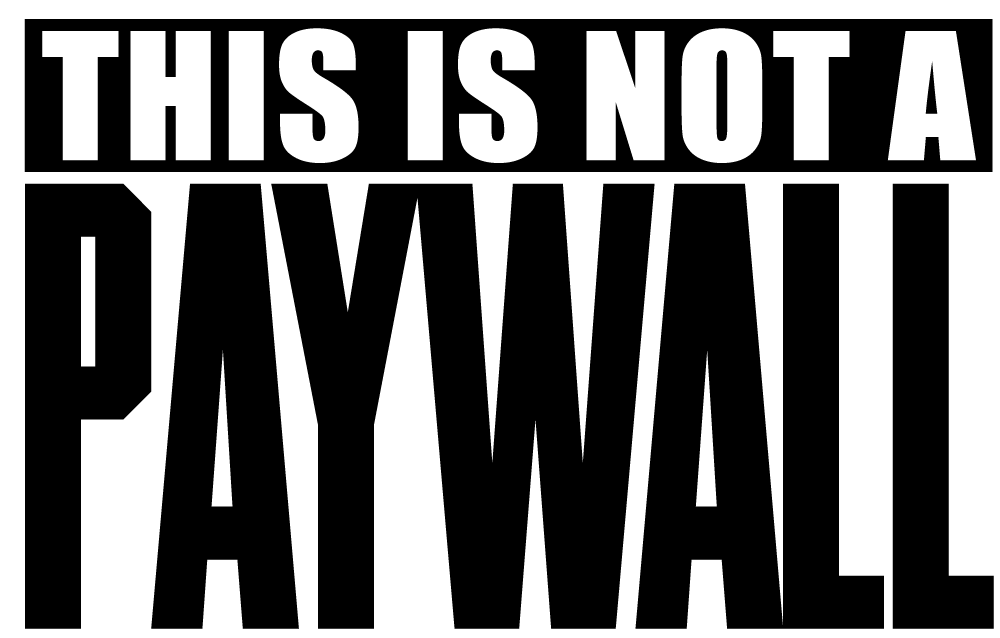Grizzly bears are expected to navigate around all sorts of human obstacles: train tracks, roads, fences, even towns.
When they don’t, they’re considered a nuisance — to some, at least.
But for others, like filmmaker Leanne Allison, the inability to see the world from the bear’s perspective is simply a failure of the human imagination.
Allison, who made a documentary film about another Banff grizzly bear that was killed by a train, finds value in the exercise of getting in to a bear’s mindset.
“It’s nice to spend a bit of time imagining the world from an animal’s perspective because animals can’t tell their own stories,” she says.
Actively trying to understand how grizzlies move from one place to another can help minimize conflict between people and bears.
But thinking about grizzlies and how grizzlies exist upon the landscape extends well beyond the purview of filmmakers and ecologists, according to Bill Snow, consultation manager with the Stoney Nakoda Nation.
To him, grizzly bears are land guardians.
“We see them as caretakers of certain areas,” Snow says. “Traditionally their role [is] as guarding over certain areas and looking after the medicines in that area. And there’s a large spiritual and cultural component that grizzly bears have on landscapes that we understand as traditional knowledge.”
Snow said his nation’s traditional beliefs lead members of the Stoney Nakoda to operate with deep respect around grizzlies.
“We know that there’s areas out there where they like to feed. That’s why we stay away from them … We don’t want to go charging into an area just because we want to be there and then, you know, kick everybody else out.”
————
Featured in this episode:
Leanne Allison, documentary filmmaker – her project “Living With Wildlife” looks at human-bear co-existence in the Bow Valley
Jodi Hilty, Yellowstone to Yukon Conservation Initiative president and chief scientist
Bill Snow, consultation manager with the Stoney Nakoda Nation, who contributed to a cultural assessment of grizzly bears
Undercurrent soundtrack sponsored in part by Approach Media.
Podcast (episodes): Download
Episode Transcript
LEANNE ALLISON: So this first quote: ‘There aren’t a lot of ways for a grizzly bear to die. At least that’s the way it was in the wild.’
MOLLY SEGAL: This is filmmaker Leanne Allison. She’s talking about her documentary called Bear 71. It’s an interactive website and it tells the story of that bear, 71, a female grizzly who was born and monitored in Banff National Park.
LEANNE ALLISON: It’s nice to spend a bit of time imagining the world from an animal’s perspective because animals can’t tell their own stories.
MOLLY SEGAL: The end of Bear 71’s story is similar to Bear 148’s. Not in the exact details. Bear 71 was looking for grain that had spilled on the railway tracks to feed her and her cubs. She was killed by a train. Bear 148 was translocated and then shot by a hunter in British Columbia. Even though these deaths were different, biologists would classify them both as “human caused mortality.”
For The Narwhal, this is Bear 148. I’m Molly Segal.
On this episode, we’re going to look at how animals get from A to B, around all of the obstacles we’ve created. Things like trains, roads and even towns. And what’s at stake for them if they can’t make their way around all those things?
One of Leanne’s recent documentaries looks at some of the things being done in the Bow Valley to make it easier for wild animals and people to be near each other — to coexist better.
LIVING WITH WILDLIFE: Where is 148?
MOLLY SEGAL: Right now you’re hearing a clip from that documentary. It’s called Living With Wildlife. And when Leanne was filming this story, she ended up in a car with a provincial wildlife biologist.
LIVING WITH WILDLIFE: Our aversive conditioning program works with individual bears like 148 here …
MOLLY SEGAL: That was summer 2017 and they were following Bear 148.
LIVING WITH WILDLIFE: It looks like she might have moved …
LEANNE ALLISON: The way he put it, is he was he was kind of babysitting her. And so he was just kind of running around like mad. And there were other people too, volunteers for Alberta Parks and bear guardians and it was kind of all hands on deck.
MOLLY SEGAL: When Bear 148 walked into Canmore to feast on ripe berries, she was walking through something that’s called a wildlife corridor.
JODI HILTY: Hi Molly.
MOLLY SEGAL: Jodi Hilty is an ecologist and she specializes in wildlife corridors. She’s the president and chief scientist with Yellowstone to Yukon Conservation Initiative — or Y2Y.
JODI HILTY: She not only, you know, was walking through the corridor but she actually parked herself in the corridor.
MOLLY SEGAL: I’ve met her at Yellowstone to Yukon’s office in Canmore, Alberta.
JODI HILTY: So a wildlife corridor is a physical space that allows different species, or wildlife, to move from one place to another. A corridor is different than a protected area in that so often it’s degraded and we’re just trying to manage for animals to move through those places.
MOLLY SEGAL: Corridors are for wild animals sort of like what our highways are to us: a way to get from A to B. But Jodi says that can mean different things for different critters. It could be an annual migration from one place to another. Or just the ability for a species not to get stuck in one place over the course of generations.
JODI HILTY: We humans can draw maps and decide where they’re going to be but it’s only functional if wildlife move through it.
MOLLY SEGAL: And there may be people may be right around that corridor, like in the town of Canmore.
Jodi shows me a map of the Bow Valley. It’s colour-coded. Banff National Park and the provincial parks are green, which means they’re protected areas. And the corridors are shown here in yellow.
MOLLY SEGAL: What are we talking about here when we’re looking at it? It’s pretty, it’s pretty slim.
JODI HILTY: Yeah, it is really slim, yeah. Skirting around the town are these sort of very narrow slivers of what we call the remaining wildlife corridors.
MOLLY SEGAL: Grizzly bears have to walk very close to the town of Canmore to make it to and from Banff and the Kananaskis provincial parks. For a bear to pass through Canmore without walking through an area where people are or an area that people have built up developments, is more or less impossible.
JODI HILTY: The reality is that, you know, there are there are roads, there are trails, there are recreation centres, all sorts of things that they could be running into and even houses depending on what route they take.
MOLLY SEGAL: The wildlife corridor sort of diverges in three slightly different ways. I point to one that looks the skinniest and ask Jodi about its size.
JODI HILTY: One of the controversies that’s been in this valley for at least 20 years is, how wide does that corridor need to be?
MOLLY SEGAL: She says the province’s measurements for that particular corridor are still kind of up in the air. But, more generally, there are a lot of questions when talking about wildlife corridors. And there’s also ongoing research about them. Jodi and I are talking about the Bow Valley, but Yellowstone to Yukon is looking at all of this on a bigger scale: as far north as Yukon territory and as far south as Yellowstone National Park in Wyoming.
Corridors are just one way we can make space for wild animals. In Banff, there are these special pathways for wildlife to get across the major highway. Some of them look like bridges that cross over the road. Others let wildlife pass underneath the road altogether. And about about two decades of research is starting to show some interesting things about how animals use those crossing structures.
Not all grizzly bears will use the same designs.
JODI HILTY: If you just care about an occasional male making it over the highway and fathering cubs and sort of contributing his genetics, it could be possible to just have underpasses. In order to have connectivity of female populations as well, which is important for long term health, that actually females with cubs are only using those overpasses, which there are a lot fewer of.
MOLLY SEGAL: Where there are no crossing structures or when critters just aren’t using them, there can be small, isolated pockets of animals.
JODI HILTY: But as soon as they’re in a small population of say 12 individuals someday there won’t be a breeding pair and ultimately they’ll go extinct.
MOLLY SEGAL: And there’s actually research to show that this happens. Scientists looked at the genetics of bears in parts of Alberta and British Columbia.
JODI HILTY: We’re really seeing fragmentation of populations that we can see using genetics. So this used to be a continuous population and now it’s actually sort of subpopulations that are either poorly connected or may not be connected at all.
MOLLY SEGAL: Jodi shows me a map of this. The subpopulations — those isolated pockets of animals — look like a mosaic: each tile on the map representing a group of animals that’s starting to become genetically distinct from the other groups.
It usually happens where we build our roads or developments and disrupt the places where animals were living or would have been travelling through. While there are some of these special, animal crossing structures outside of the national parks, some people want to see more of them.
BILL SNOW: If connectivity was taken seriously, I’m talking about over the last, you know 50, 60 years, where we’ve had modern highways in the area. If that connectivity piece was a part of the planning. Maybe we wouldn’t have a situation like Bear 148. My name is William Snow and I’m the consultation manager with Stoney Nakoda Nation at Morley Alberta.
MOLLY SEGAL: Morley is on the Stoney Reserve, about 45 kilometres east of Canmore on the Trans Canada highway. The land Banff National Park was built on is part of the Stoney Nakoda Nation’s traditional territory. In 2016 the Stoney Nakoda Nations published its study of grizzly bears in the Kananaskis area. And that study suggests changes to how Alberta Environment and Parks manages wildlife in that area.
BILL SNOW: If we look at the, some of the recommendations of the report one of the big parts is connectivity.
MOLLY SEGAL: East of Banff National Park there are some of those special wildlife crossing structures on the highway. But Bill says, not enough of them.
BILL SNOW: People all throughout the valley have been benefiting from transportation access and if we’re not big enough to build in that connectivity for wildlife, the wildlife that people are coming out here to see, if we’re not big enough to do that then, you know, we’re definitely asking for more incidents to happen.
So it’s this philosophical side I think that people really have to understand. Policymakers have to understand that those landscapes are not just for us.
MOLLY SEGAL: This report was actually published before Bear 148’s death. But Bill says there were similar deaths of grizzly bears that got them thinking about doing this assessment in the first place.
BILL SNOW: We were seeing and reading all the incidents that were happening in Kananaskis and because of all of those incidents happening with parks people, with parks users, with tourists, that was the main motivating thing was to add in what we believed was our understanding of grizzly bear behaviour.
MOLLY SEGAL: He says that one of the aims of the report is to have traditional knowledge — of both wild animals and the environment — included when the province is making decisions on things like, where to build wildlife overpasses.
BILL SNOW: It’s that understanding that there’s two knowledge systems at work here. One is the western science and the other is the traditional knowledge. And we need to consider both of those as part of our ongoing mitigation and land management.
MOLLY SEGAL: Another suggestion from the study: have people from the Stoney Nakoda Nations act as cultural monitors of the area. So, much like the park’s biologists that monitor the environment, only from a different perspective.
BILL SNOW: When our people go out on the landscape, they don’t have that Western scientific understanding. Their understanding is based on their stories, their oral teachings and their knowledge of that area. They’re going to be looking for different types of indicators to explain wildlife behaviour.
MOLLY SEGAL: Having ways for grizzly bears to travel from from one place to another is one thing. But grizzly bears also need space to live their lives. Bill says some of those areas are in Kananaskis, where Alberta Environment and Parks has hiking trails.
BILL SNOW: Certainly there are areas where we don’t believe there should be, should be a lot of activity.
MOLLY SEGAL: An area called Galatea Creek is specifically named as one of those places. And it’s worth mentioning that there is a precedent for area closures. There are already some areas in the provincial and national parks that are closed to people, either all year round or at certain times of year, because biologists know just how important they are to animals.
Jodi Hilty with Yellowstone to Yukon.
JODI HILTY: Are there certain trails that we should have limits on or even close during certain times so that particular wildlife species have a little bit more space. And I know that’s something that Banff has practiced around dens and other important places for wildlife and that might be something that we increasingly use.
MOLLY SEGAL: But, the Stoney Nakoda grizzly bear study offers another way to think about why people shouldn’t be in some areas of the mountains at specific times of year. As well as insight into how grizzly bears use that space.
BILL SNOW: We see them as caretakers of certain areas. Traditionally their role as guarding over certain areas and looking after the medicines in that area. And there’s a large spiritual and cultural component that grizzly bears have on landscapes that we understand as traditional knowledge.
You can’t explain that in western science. In western science, ‘oh, they eat berries. So we just grow berries over here, we can grow berries here and, you know, they can move around it.’
It’s not like that in traditional knowledge. We know that there’s areas out there where they like to feed. That’s why we stay away from them. And we’re always on guard about that when we go into mountain areas because, you know, we want to be respectful. We don’t want to go charging into an area just because we want to be there and then kick everybody else out.
MOLLY SEGAL: So, Bill says if wild animals can’t get to their usual spots because people are there, in turn that affects the environment.
BILL SNOW: Just as we have, as Stoney people, important cultural spiritual areas out in the landscape, same thing for the grizzly bears. Same thing for the other wildlife. It’s about sharing the landscape with the wildlife. But right now we’re not doing a very good job of that, in my view. We’re not doing a good job of that today.
MOLLY SEGAL: Thank you for listening to Bear 148.
On the next episode — the province’s tough decision to move Bear 148 far away from her home.
PAUL FRAME: She was having daily encounters with people for seven days. And on the seventh day, she came to within one metre of a man. And that was when we decided that it was time to remove that bear from the landscape there.
MOLLY SEGAL: The final events and decisions that lead up to Bear 148’s death.
SHOW CREDITS: This podcast was created by me, Molly Segal, with editorial support from Emma Gilchrist and Carol Linnitt. Cover art for our show by Justine Wong.
Bear 148 was made with the support of the Yellowstone to Yukon Conservation Initiative and the Alberta chapter of the Canadian Parks and Wilderness Society.






